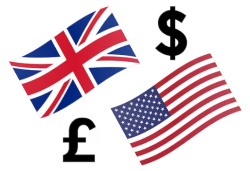FrankPro Signal for GBPUSD_116
Type: Screen
Signal: SELL
TP: 1.35185
SL: 1.35746
Entry Price: 1.35644

Flexity Analysis for GBPUSD
Forecast Overall(Short-Term, Long-Term): ST=Probably Down LT=Undecided
Forecast Methods(Short-Term, Long-Term):
[Method0] ST=Down LT=Same
[Method1] ST=Down LT=Same
[Method2] ST=Up LT=Same
FlexityIndicator Analysis Method(0)
Short-Term: **Answer:** Based on the provided analysis, the GBP/USD exchange rate is expected to **go down** in the short term. Long-Term: Based on the analysis of the provided context, the GBPUSD pair is expected to remain within a price range of 1.2500 to 1.3000 in the short to medium term, indicating potential consolidation rather than a definitive upward or downward trend. The long-term direction is influenced by factors such as central bank policies, economic data, and geopolitical events like Brexit developments. Without specific information on current market conditions or significant structural changes, it's challenging to predict a clear long-term movement. Therefore, the expectation is for GBPUSD to remain within this range without a strong indication of an upward or downward trend in the long term. **Answer:** The price for GBPUSD is expected to stay within the range of 1.2500 and 1.3000 in the short to medium term, with no clear long-term direction indicated.
Result: [Method0] ST=Down LT=Same
FlexityIndicator Analysis Method(1)
Short-Term: **Conclusion**: Based on the analysis of trading forecasts, price predictions, and market news, the GBPUSD exchange rate is expected to **go down** in the short term. Factors such as a bearish outlook, potential declines towards 1.3450 if certain levels are breached, cautious economic policies, and external pressures like trade uncertainties contribute to this expectation. Long-Term:
Result: [Method1] ST=Down LT=Same
FlexityIndicator Analysis Method(2)
Short-Term: **Answer:** Based on the analysis of the provided context, the GBPUSD exchange rate is expected to **go up** in the short term. This outlook is supported by several key factors: 1. **Weakening USD:** The US dollar is weakening due to trade tensions with China and poor economic data (ISM manufacturing index and construction spending). A weaker USD tends to strengthen other currencies, such as GBP. 2. **Trade Uncertainties:** Escalating trade tensions between the US and China contribute to market uncertainty, favoring safe-haven assets like GBP as investors seek stability. 3. **Market Sentiment:** Defensive risk sentiment with increased gold and oil prices indicates heightened volatility, further supporting safe-haven currencies. 4. **Geopolitical Factors:** Concerns about inflation risks and weaker labor markets in the US may keep pressure on the dollar, potentially leading to further appreciation of GBP. 5. **Upcoming Data Releases:** Expected weak PMI data could maintain downward pressure on USD, supporting GBP's upward trend. In conclusion, considering these factors, GBPUSD is forecasted to appreciate in the short term. Long-Term: The text does not provide specific expectations regarding whether GBPUSD is expected to rise, fall, or remain stable in the long term. It discusses general factors affecting currency markets without offering explicit forecasts or predictions for GBPUSD. **Answer:** The text does not offer a specific expectation on whether GBPUSD will go up, down, or stay the same in the long term.
Result: [Method2] ST=Up LT=Same

